

Baten Kaitos is a very different type of game from what you might be used to, for a number of reasons. Aside from that, however, it's also an excellent game, for a variety of different aspects that it works well with, and improves on which you are used to. It's a bit hard to take all of this in all at once, as it ends up being a rather cumbersome process of explaining how it's different, how it's the same, how these aspects work, and how everything comes together. If you're prepared for a bit of a lengthy read, however, you'll find out about a game which, while it's different, while it might not be what you were expecting, when it all comes together, adds up to one very good game, which is definitely worth checking out for anyone with a love of RPGs in general.
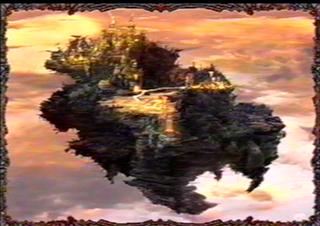
The first thing to note is, while it is an RPG, Baten Kaitos is a card-based RPG. I'll be describing the gameplay of this game as someone whose first experience with a card-based RPG is with this game because, well, that's how it was for me. I can't really compare it to other games which used a similar format since, I haven't played others. So, if you're already familiar with the gameplay style, much of this may seem familiar or unnecessary to you. Still, for anyone who hasn't tried them before, and maybe is a little bit unsure of the idea, hopefully this will help them get an idea of what they're getting into, how it works and how it feels. For people who are already familiar with the format, while it may seem like a bit of review, hopefully it'll give you a general idea of how this game works as well.
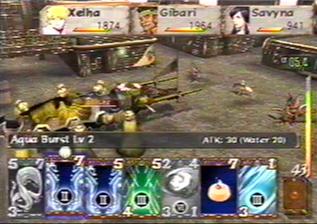
Baten Kaitos, as mentioned, is an RPG with a card-based battle system (the cards are called Magnus in the game, but, for simplicity's sake, I'll just be calling them Cards). What this means is, as opposed to choosing "Attack" or whatnot from a menu to attack your enemy, you choose a card which has a particular attack or spell on it. How this works is, during the course of your adventure, you'll accumulate cards. You can buy these in shops, find them hiding on shelves, win them from enemies you defeat, and many other ways. You can have up to 1000 total, so, there are certainly plenty to choose from. These cards have pictures on them, which describe the action they perform. These really aren't significantly different than equipping yourself with specific weapons, or casting spells. Cards can be a normal sword, an ice sword, a fire spell, etc. You can also find cards which have healing items, armor for defense against enemy attacks, and other such things like that.
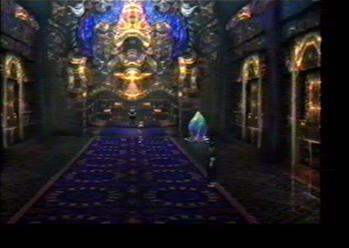
While you build up a very large supply of cards over the course of the game, you only can hold a certain number in your deck at a time, and can only play a certain number of them in battle. These numbers increase as your levels increase (which is another topic which will be discussed shortly). For instance, it may be that, to give an example, you can take 40 cards with you into battle. At the start of the battle, 7 cards will be dealt out to you. You choose your first card from the ones you have, and another one from the deck will go into the empty slot to fill up the one you used. You string together a series of cards to form out your entire attack (the number of cards you can use, again, increases as you progress). For instance, you might start off using a normal sword, then an ice sword, an ice spell, another ice sword, and then a wind sword finisher. Finisher cards are cards which, when played, end your turn (regardless of whether you've played your maximum number of cards or not, so, obviously you want to try to use these as your last card), and deal more damage than most other cards. Then, once everyone goes through their attacks, the enemy will attack you with their moves. While the enemy is attacking, you can select cards from your hand to protect against them. Armor and shields and the like (which can't be used to attack) have the highest defense, but, many weapons can also be used for some protection against attacks.
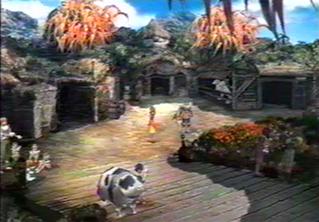
Needless to say, how you choose to compose your deck is a very important matter. If you only use spells, you're leaving yourself wide open to attacks. If you fill your hand with defense and healing items, you're not going to be able to do much damage when it's your turn to attack. So, finding a good balance between offensive and defensive cards is very important. As you acquire new cards during your adventure, you can insert these in place of older, weaker cards. Certain cards can only be used by particular characters, while other cards can be used by all characters. So, choosing what sorts of attacks you want your character to use, how much you want them to focus on defense or healing, and other decisions, are things you'll have to be managing along your way. As well, in battle, the element of your attacks is something you'll need to be considering. If you use a Light spell and immediately follow it by a Dark spell, the two will largely cancel out each other's effect. So, to be most effective, you'll want to string together a series of attacks with a similar element, or at least ones that don't counteract. There are 6 total elements, organized into 3 pairs of ones that oppose each other.
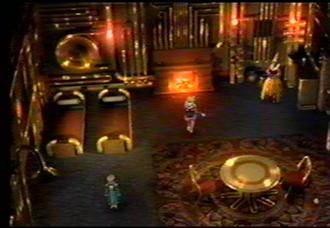
Another thing that you'll be taking into consideration, is, each card has a number or set of numbers assigned to them, from 1-9. When you're just starting out, each card will only have one number, but, as you progress, cards will have up to four numbers. The numbers are listed on the corner of the card, and, you select which number you want to use by pressing a direction on the C-stick. You can select cards with the A button as well, of course, and the number in the upper-right corner will be used automatically. These numbers come into play in that, you get bonuses for arranging numbers. For instance, if you play six cards, the first three have the number 5 on them, and the second three have the number 7 on them, you'll get a bonus for having two pair. Or, if you play five cards, and the numbers on the cards are the numbers 3-7 in order, you'll get a bonus for a straight. While you aren't required to do this, getting, say, a 40% bonus on an attack of 300 damage is certainly a very sizable difference.
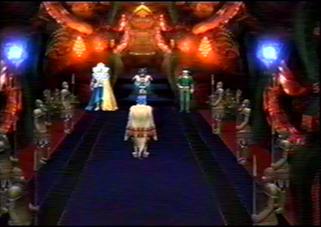
As you defeat enemies, you'll gain experience. You don't, however, just level up automatically. In order to level up, from save points you can go to a church, and here you can select to level up. I'm not really sure the particular reason for doing it like this, there doesn’t really appear to be any particular reason. Nonetheless, it isn't really that big an issue. Leveling up will give you more hit points and increase your statistics, but, the other thing is, you can also Class Up. In order to do this, you need to have found a specific item. Usually the item is something that you're fairly certain to get, either from defeating a boss, or in a place where you really can't miss it. So, it's not like you really need to worry too much about missing some critical item hidden away in a book case in the corner or something. Raising your class allows you to hold more cards in your hand, and combine more cards into a combination. So this, needless to say, is very important as well.
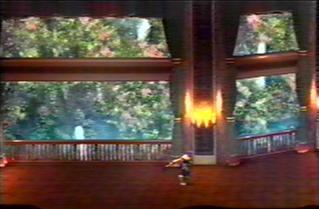
Another thing that's different is, while you need gold to buy items and supplies throughout the course of the game, enemies don't just drop gold when you defeat them. The way you earn gold is, some of the cards that you can include in your deck are Camera cards. Using these cards when they come up takes a picture of the enemy, which you can select as one of your items to keep after the battle. Taking these photos to stores in towns, you can then sell these for a good amount of gold. Again, it's different, and I'm not really sure why, but, it works fine. It's not really that big a deal, just using the camera in place of one of your attacks when it happens to come up in battle. As well, when your characters get injured, there are two ways to heal them. There are items you can buy which can be used outside of battle, which you can use to heal your character and then disappear. You can also, however, place some healing cards in your deck and, when they come up in battle, use these cards to heal your characters. The downside to this, obviously, is that if you're healing someone, you're passing up a chance to be attacking the enemy. The upside to this, though, is that the cards you use in battle have unlimited uses, and so you don't have to worry about running out of them or buying new ones.
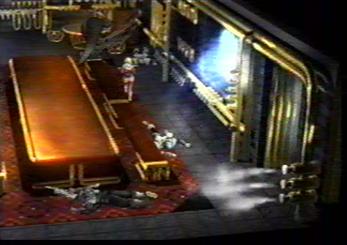
I think that about covers all of the stuff which is different from your normal, standard RPG. All of this may seem a bit daunting, especially if one hasn't experienced a game with a card-based system before. I know it had concerned me prior to my getting the game. I had been used to a standard normal RPG battle system, and certainly had my doubts about how this would all play out, for a number of reasons. The game does a very good job of working you into the system, however, and, as you progress along the way, you definitely get very used to it. By the time you really start into the game, with the number of cards and attacks increasing, everything really feels second nature, where you're hardly giving it any thought at all. While I'm definitely not going to give up my love for a normal RPG battle system, I have to say, I was very impressed with how well this particular system was pulled off.
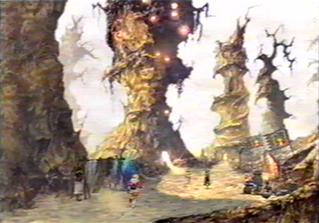
In any event, enough about the gameplay style. Hopefully you have a good idea of what to expect from that now, and, if you were already familiar with the style, you definitely want to know some more about the actual game itself. In Baten Kaitos, you aren't actually playing as one of the characters. Instead, the main character, Kalas, has a "Guardian Spirit" who is bonded to him, and this is you. While this might sound a bit awkward at first, being something that isn't actually "part" of the group, it really doesn't end up feeling any different from your normal approach. At various points during the game, during dialog scenes and whatnot, the characters will occasionally look out toward the screen at you, and discuss something with you or ask you a question. It's an interesting approach, and while I wouldn't say it's perfect, it's definitely something that's effective. There is also a reason the game chooses to take this particular approach, which will tie in with the story later. You don't really need to worry much about that at this point though.
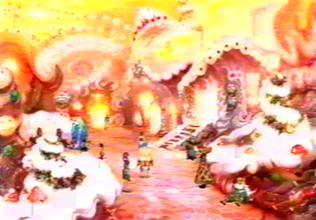
You start off with only your one character, but, as the game progresses, five more people will join your party. You can only have three active members for battle at a time, so, it'll be up to you as to which characters you want to use, and how you want to use them. Each character has their own particular strengths and weaknesses, certain cards they can use that no one else can, and other stuff like that. So, who you choose to add and subtract in your group is going to give you a very different look on the game. Even once you beat the game, just playing through it again using some of the characters that you didn't really use much the first time through can give you a new look and feel on the game. The story starts off a bit slow, but, really picks up as you go along. You begin by finding yourself being woken up in a bit, and being informed that you had wandered off into a forest and gotten injured, and unfortunately you as the guardian spirit have lost your memory of what happened before all of this (in particular, since you as the player weren't involved in the game before this, obviously. Kind of hard to remember something you weren't there for). Once you're feeling better, you get up out of bed, and go explore the town you're in. Not exactly the most gripping beginning, doesn't really start off by sending you immediately on any epic quest or anything. As you explore the village, going around and talking with people, you'll gather some information about where you are and what's going on. Once you've gotten everything together, of course, you go right back off into that forest where you'd gotten injured. Not the smartest thing to do, but, hey, you're just persistent like that. As you adventure through the forest, you'll meet up with a girl who is on a journey. You'll join up, and, at the end of the forest, naturally, you'll find a big evil monster. From here, the story starts to open up, as you find out about the quest the girl is on, and, of course, you'll be going with her on that. The game gives you enough hints where you have a basic idea of what's going on as you go along, but, there are definitely some twists and turns along the way, some which you likely won't be expecting.
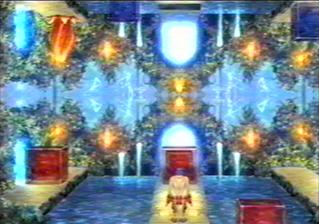
Without trying to give away too much about the story, the world you're exploring in is composed of floating islands in the sky. There are stories that, at one point, the islands were on the ground, and there was a big mass of water called the Ocean (hence the subtitle of the game). An evil god, however, brought destruction to the world, and things were tossed into disarray. The world was saved when his power was drained, and he was sealed away into five "End Magnus." These cards were separated and hidden away in protected areas. These held him in check, but, there are stories that one day the cards will be reassembled, and he will come back and bring the end to the world. The Empire, lead by the emperor, and the person who killed Kalas' family, has set out on a mission to gather these cards, and bring him back. So, needless to say, you set out to get the cards first, and stop the Empire's plans. Along the way, though, you'll encounter many other side stories, and goals and tasks to accomplish. As you make your way through the game, the leading story really starts to pull together. You're given glimpses and hints of various things, so you don't feel completely lost or anything, but, the story really keeps you interested and wondering right up through the end. There are definitely some drastic, and unexpected, twists and turns along the way, particularly as you get near the end. One down side to the story, which is hard to really explain in detail without giving large plot points away, but, the best way to put it is: Playing through the game a second time after knowing what already happened in the story, it's kind of awkward knowing how things turn out. Not in the way of "Well, I already know what happened, so I don't need to see it again," not that sort of situation. Just, the path the story takes, it creates a bit of an odd feeling going through it knowing how it'll turn out. Not that it's necessarily a bad thing, just, as said, it is a bit awkward. Nonetheless though, that's not something you have to worry about right away, at least not your first time through the game.
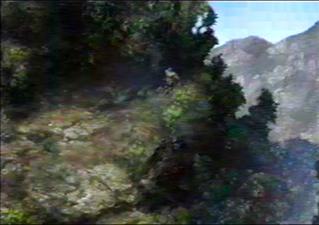
Your progress through the game takes place by going through a series of towns and places with enemies, separated into separate areas and connected on a map screen where you can walk between one place and another. You'll enter a town, explore and go around talking with people, buy items, rest and get prepared. Then, when you're set, and find out from the people in the town where you're going next (everything's connected very well in the story, it's not like you're just randomly going from one dot to the next), you'll head off to an area with enemies, make your way through that, and accomplish whatever it is that you need to do there. All enemies are visible on screen, and they'll be wandering around as you are. If they notice you, they may chase after you, and of course sometimes an enemy may be blocking your path. For the most part, however, it's up to you which enemies you want to encounter and when. Of course, avoiding all encounters wouldn't be a good idea, since then you wouldn't get any experience. Still, having the option is always a nice thing. As there are five of the "End Magnus" that you need to get, there are, sort of, what one might term "dungeon areas," where these Magnus are protected. There are plenty of other places where you'll have to battle your way through, though, it's not just these five areas where you'll encounter tasks and enemies. There are also a number of islands that you'll make your way to throughout the game. One downside here is, once you go from one island to the next, you really can't go back to any of the previous ones (aside from very late in the game). While there are reasons for taking this particular approach, and it does give one more incentive to play through the game again to find stuff you missed, it is a bit on the annoying side, since often backtracking, finding stuff, and talking to people again is very enjoyable on its own.
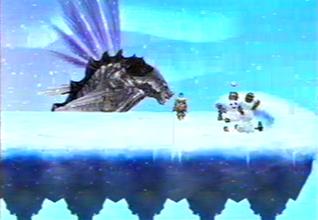
Things do open up more as you get near the end. Eventually, you are able to go to previous areas. As well, at a point you're given a number of quests which are optional, not required to do, but are some other things you can tackle before heading off to beat the game. This is quite enjoyable, and, if you do decide to head off and do all of the extra stuff it gives you, can add quite a bit of length to your journey. It's a very nice thing at that point, just, it would've been nicer if they'd given you a bit of that freedom earlier in the game as well.
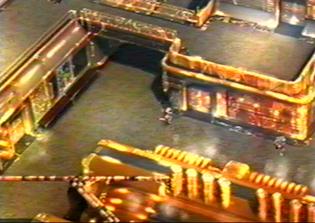
The graphics in the game are really very well done. Each town, each forest, desert, and every other place is very intricately designed, unique, and well put together. There's a wide variety to the types and styles of places that you'll make your way through, with nice little touches here and there to really draw you in. One minor downside is, the camera point in towns is often a bit too zoomed out, where it's often hard to tell exactly what's around you, if that thing next to you is a person or just a tree or part of the wall, how close you are to being able to enter a doorway, and other minor inconveniences like this. Still, it's not really that big of an issue. There are many different towns you'll make your way through, each different from the other, and it'll really give you a good feel for the place. As well, the enemy areas are all well crafted, each with their own unique theme and surroundings, and they are very fun to adventure through.
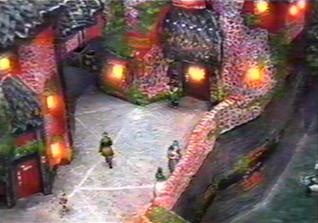
Regarding the sound, one thing to note is, the game has voices for the character dialog, but, I can't really give you any opinion on that, since I turned voices off from the option menu. This isn't to imply that the voices are bad, for all I know they might've been great. Just, I prefer reading the text myself over sitting around and listening to people speak, in this game or any game it isn't any different. I just don't like my games talking to me. So, that's just a personal preference more than anything else. Needless to say, though, plenty of people do like speech in games, so, for them, it's here. Just, I can't really comment on how good it is, or compare it to the speech in any other game (since, again, I turn it off in every game that has it). That note aside, the music in the game is also very well done. It always fits the area and the mood very well, and really draws you into the game.
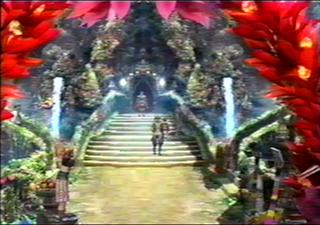
The game is of a very good length, easily at least 50 hours even if you make fairly quick progress and skip most of the extra stuff. If you take your time and look around a bit, or head off on some of the optional quests at the end, you could easily be looking at 60 or 70 hours of solid gameplay. Although you can't really do much backtracking and finding stuff you missed for the beginning part of the game, before which would normally add some more time to the journey, it's certainly long enough as it is, and it's nice when they do give the option. The story will keep you interested all the way through, and you'll definitely be interested to find out what's going to happen. Even once you complete the game, though, there are many reasons to go back through the game. There are a number of various sidequests and tasks along the way, which you don't necessarily have to complete, but are fun to work at and try to get done. As mentioned above, you can't really go back to previous islands once you've moved on, so, as well, you may have missed some stuff the first time through, which you want to go back and find the next time. There are also a whole bunch of things hidden away in the corners of the game, items on shelves and books to read and whatnot. Many times these are just minor, inconsequential things, but, again, going through and finding these things can make for a good challenge. As well, simply playing through the game again using characters that you didn't the first time, or even trying out different cards that you didn't use the first time, can give you a new and interesting look at the game. Not to mention, it's fun to play through again, simply because it's a fun game, and it's enjoyable to experience everything the game has to offer, even if you've already played through it.

In the end, after overcoming some initial worries about how the game's style and methods would work and pull together, everything ends up coming out very well. It's definitely different from many other games, especially if, like me, this is your first experience with an RPG of this particular style. While I'm not about to say this is the absolute best method, and all others should be abandoned, it still works very well, and makes for an extremely enjoyable game. If you liked card-based RPGs in the past, I would most certainly recommend this game without a moment's hesitation. Even if you're used to a more "normal" style RPG, though, if you've liked RPGs in the past, and this game sounds interesting to you, I would definitely recommend at least giving this game a chance. Give it the opportunity to grab you and pull you in, and you may find yourself falling in love with it. Excellent gameplay, great graphics and sound, interesting characters and an intriguing story, all come together to make one fantastic game. Not perfect, but, pretty close.

Gameplay: 9/10
Story: 9/10
Graphics: 10/10
Sound: 8/10
Length/Replay: 9/10
Overall: 9/10